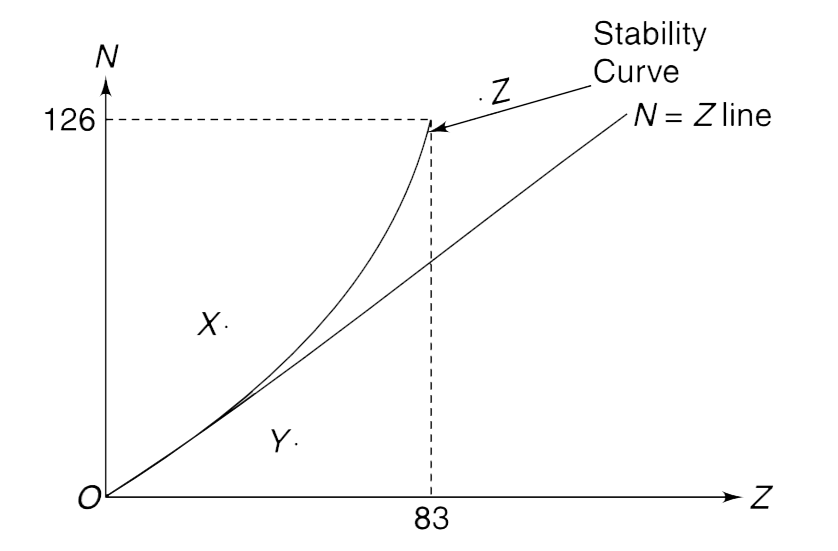A plot of the number of neutrons (n) against the number of protons (p) of stable nuclei exhibits upward deviation from linearity for atomic number, Z>20. For an unstable nucleus having n/p ratio less than 1, the possible mode (s) of decay is (are)
β−- decay (β em ission)
orbital or K-electron capture
neutron emission
β+-decay (positron em ission)
The correct Answer is:B, D
N/P can be increased by β+ decay and K electron capture. In both processes number of protons decreases and number of protons increases.
Similar Questions
Knowledge Check
A plot of the number of neutrons (n) against the number of protons (p) of stable nuclei exhibits upward deviation from linearity for atomic number, Z > 20. For an unstable nucleus having n, p ratio less than 1, the possible mode(s) of decay is(are)
Aβ−-decay (βemission)Borbital or K- electron captureCneutron emissionDβ+-decay (positron emission).A plot of the number of neutrons (n) against the number of protons (p) of stable nuclei exhibits upward deviation from linearity for atomic number, Z>20. For an unstable nucleus having n/p ratio less than 1, the possible mode (s) of decay is (are)
Aβ− -decay (β-emission)Borbital and K-electron captureCneutron emissionDβ+ -decay (positron emission)In most stable nuclei neutron number N and proton number Z has the relation
AN<ZBN=ZCN>ZDN≥ Z
Staements I: Light nuclei are most stable if N =Z, while heavy nuclei are more stable if N gtZ. (N→ number of neutrons, Z→ number of protons)
Staements II: As the number of protons increases in a nucleus, the Coulomb's repulsive forece increases, which tends to break the nucleus apart. So, to keep the nucleus apart. So, to keep the nucleus stable, more number of neutrons are needed which are neutral in nature.
View SolutionStatement : The plot of atomic number ( y -axis ) versus number of neutrons ( x -axis ) for stable nuclei shows a curvature towards x-axis fron the line of 45∘ slope as the atomic number is increased .
Explanation : proton -proton electrostatic repulsions begin to overcome attracive forces involving protons and neutrons in heavier nuclides.
View SolutionStatement : The plot of atomic number ( y -axis ) versus number of neutrons ( x -axis ) for stable nuclei shows a curvature towards x-axis fron the line of 45∘ slope as the atomic number is increased .
Explanation : proton -proton electrostatic repulsions begin to overcome attracive forces involving protons and neutrons in heavier nuclides.
View SolutionStatement-1: Th plot of atomic number (y-axis) versus number of neutrons (x-axis) for stable nuclei shows a curvature towards x-axis from the line of 45∘C slope as the atomic number is increased.
Statement-2: Proton-proton electrostatic repulsions begin to overcome attractive forces involving protons and neutrons in heavier nuclides.
View SolutionStatement : The plot of atomic number ( y -axis ) versus number of neutrons ( x -axis ) for stable nuclei shows a curvature towards x-axis fron the line of 45∘ slope as the atomic number is increased .
Explanation : proton -proton electrostatic repulsions begin to overcome attracive forces involving protons and neutrons in heavier nuclides.
View Solution

